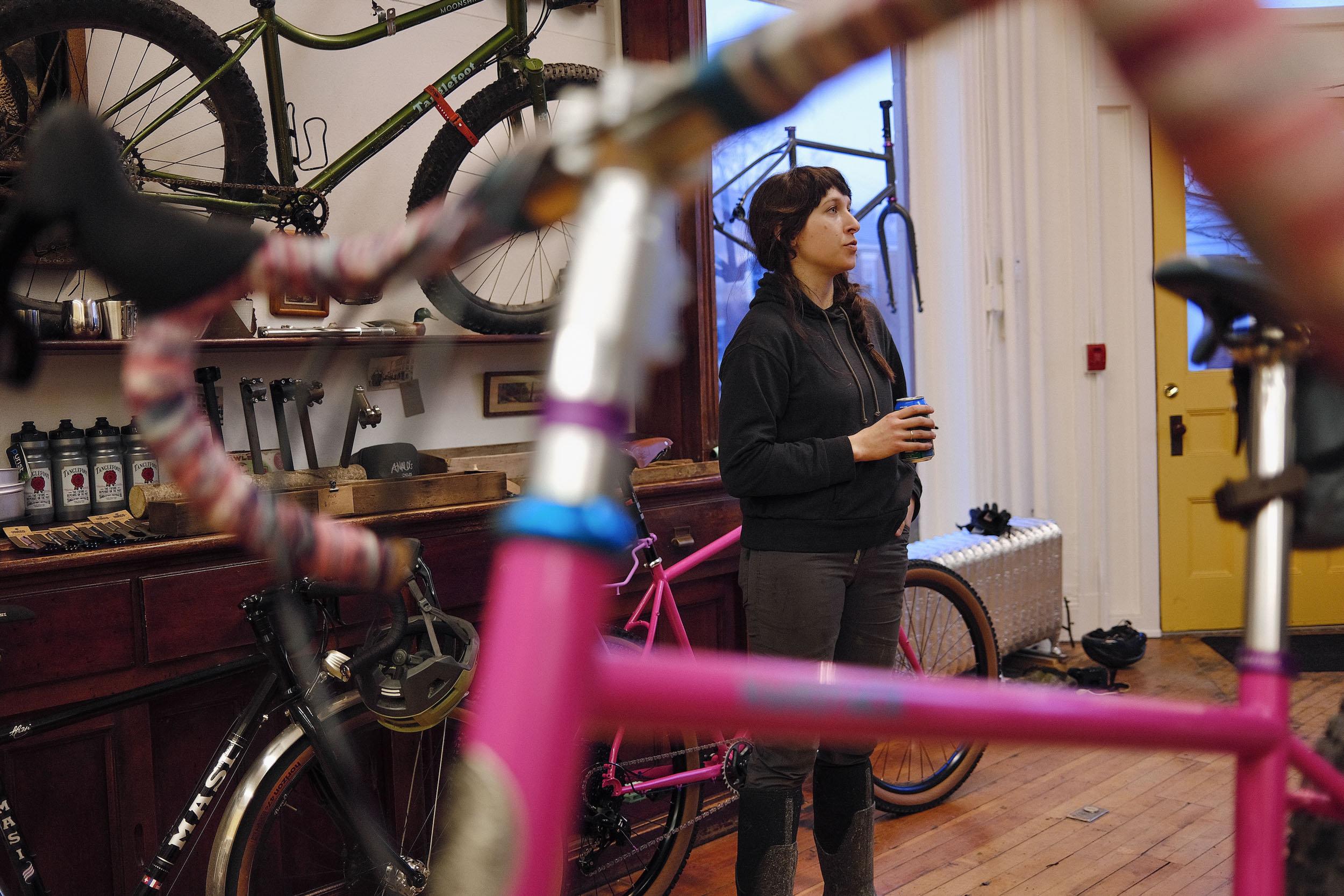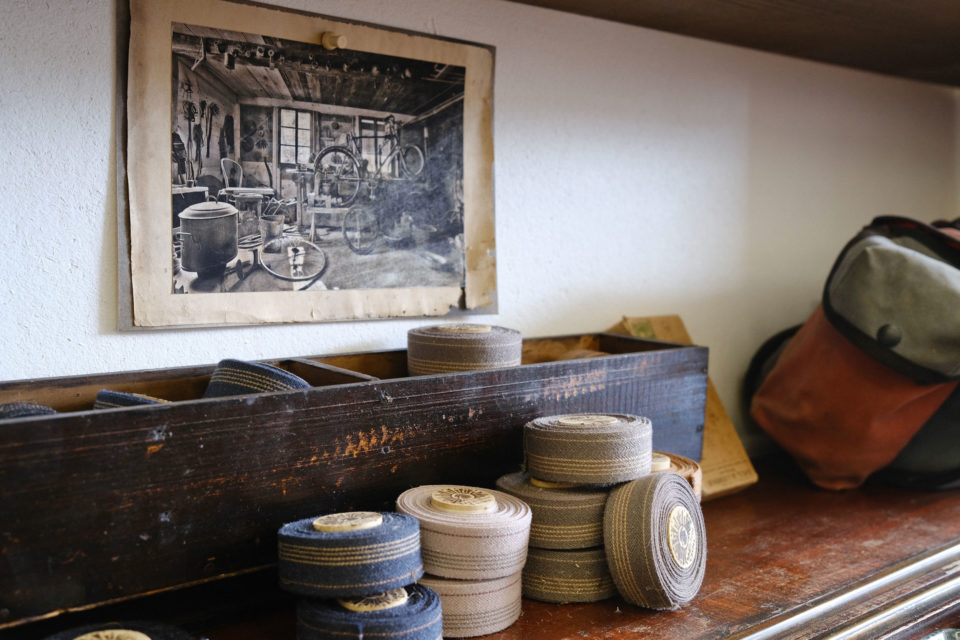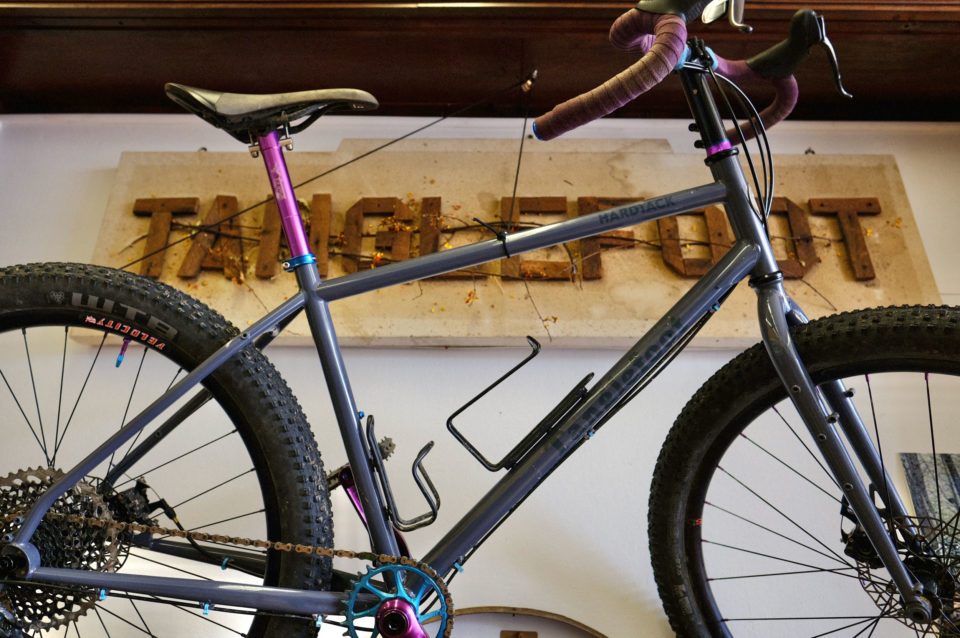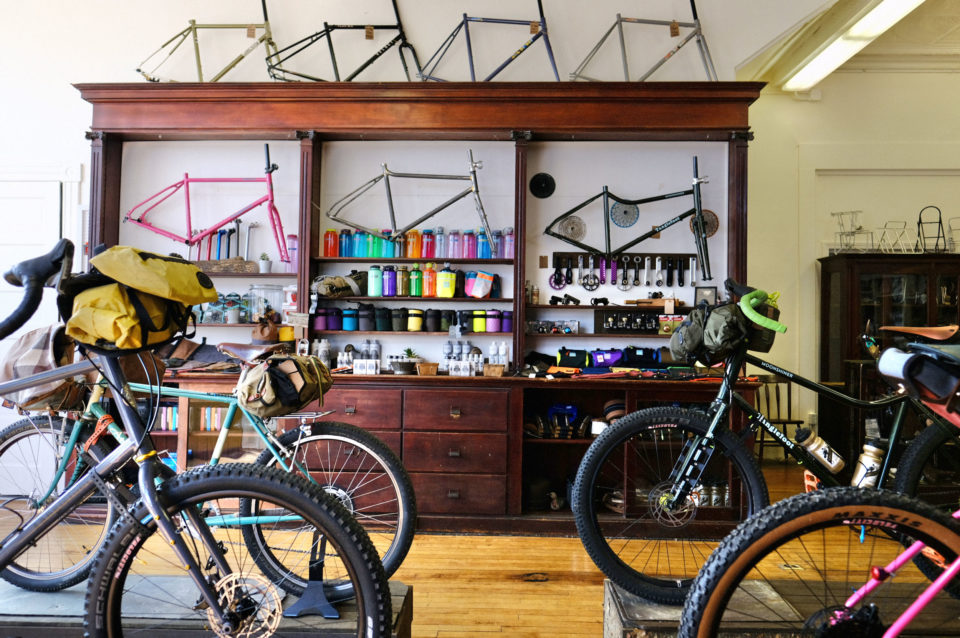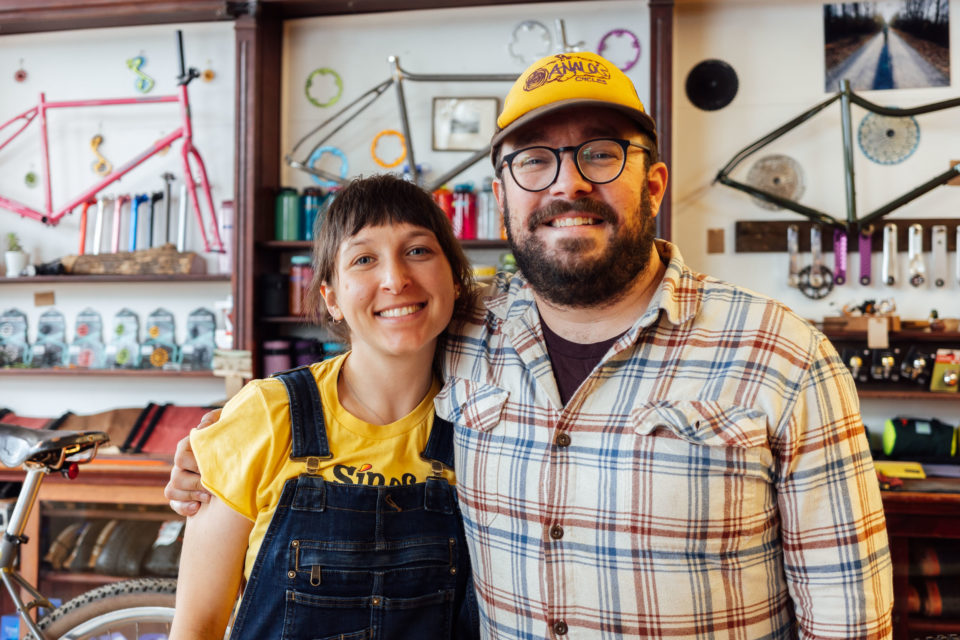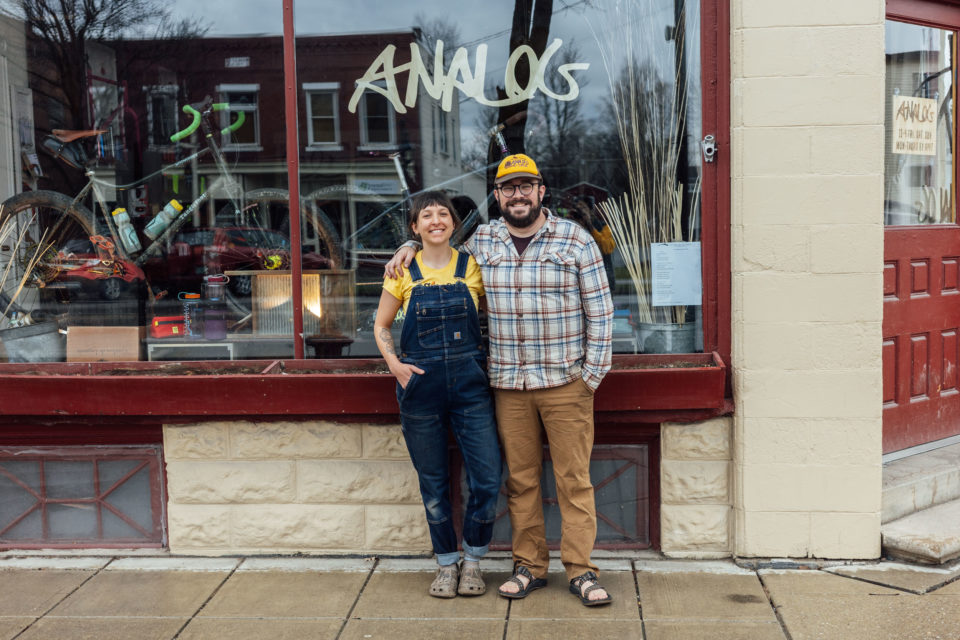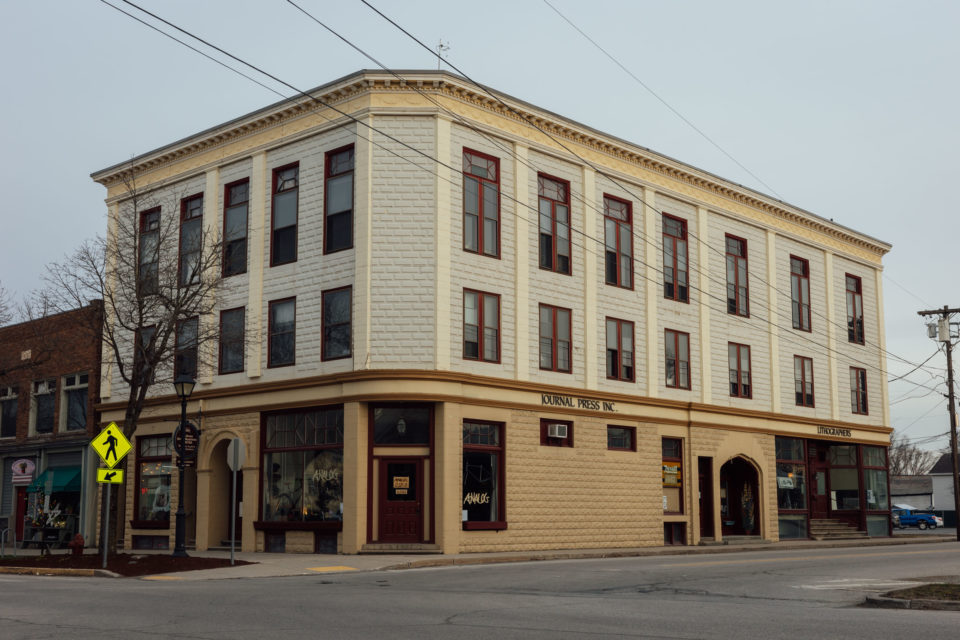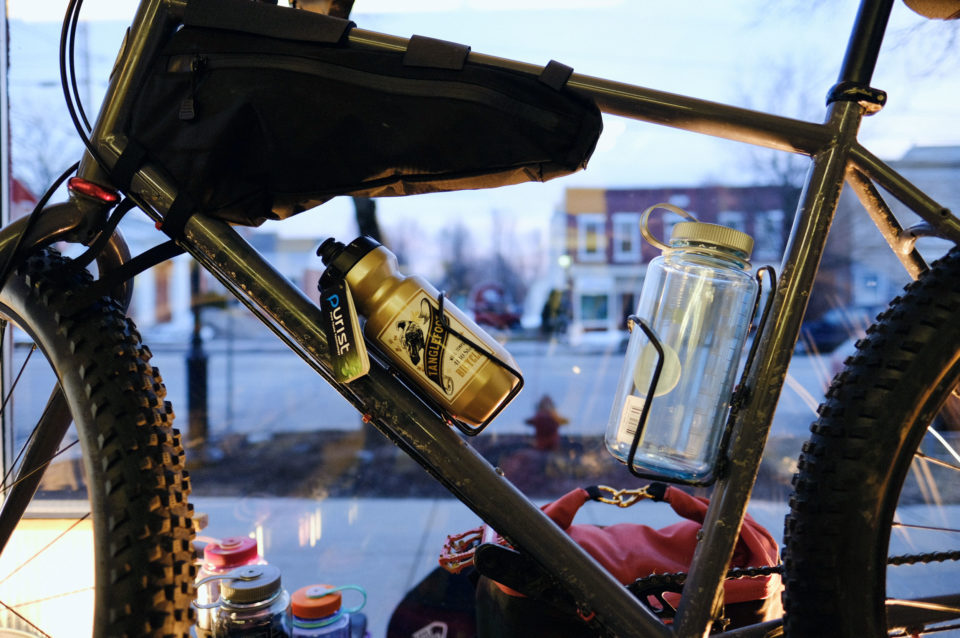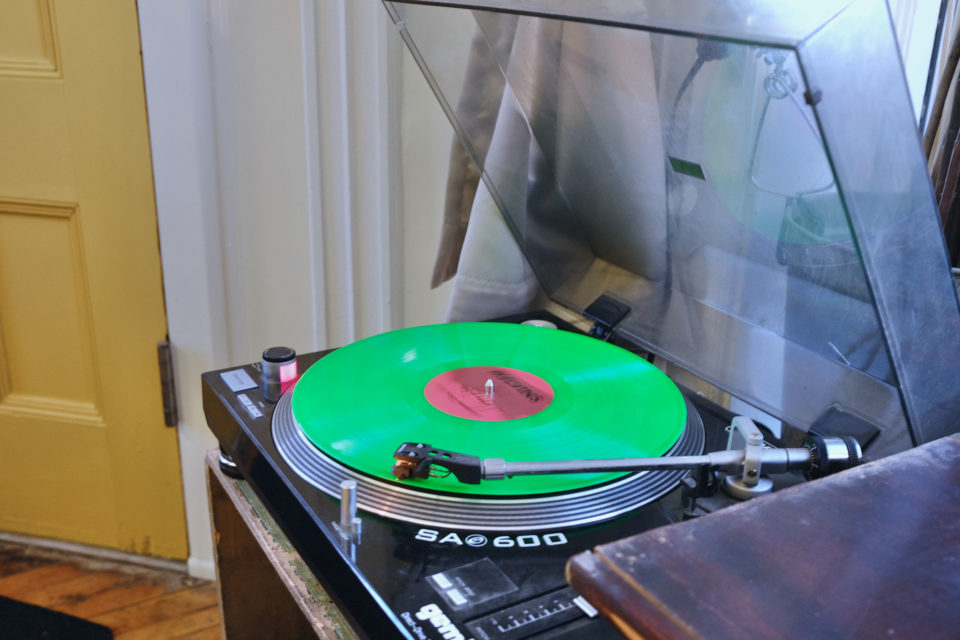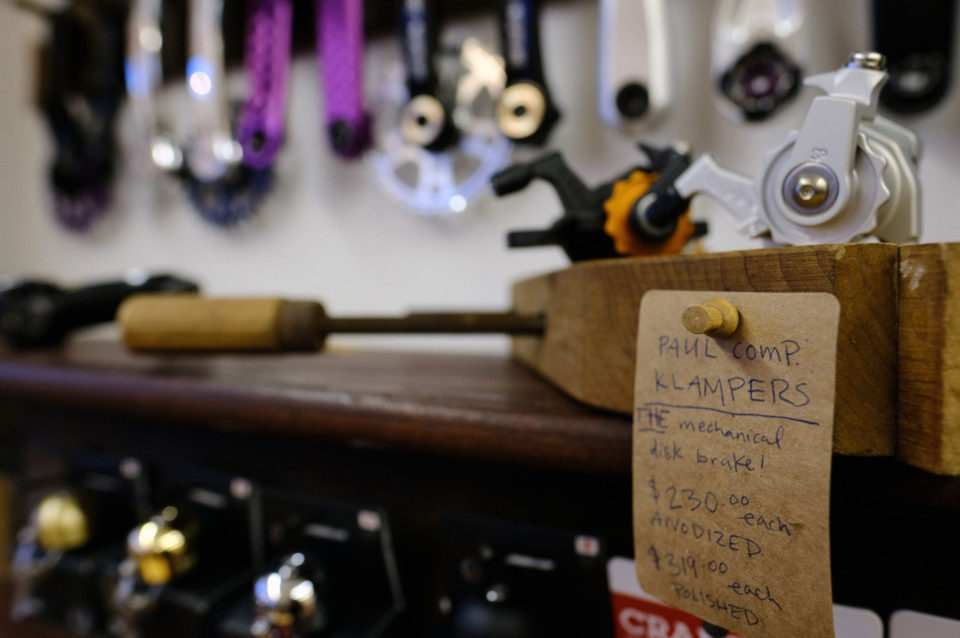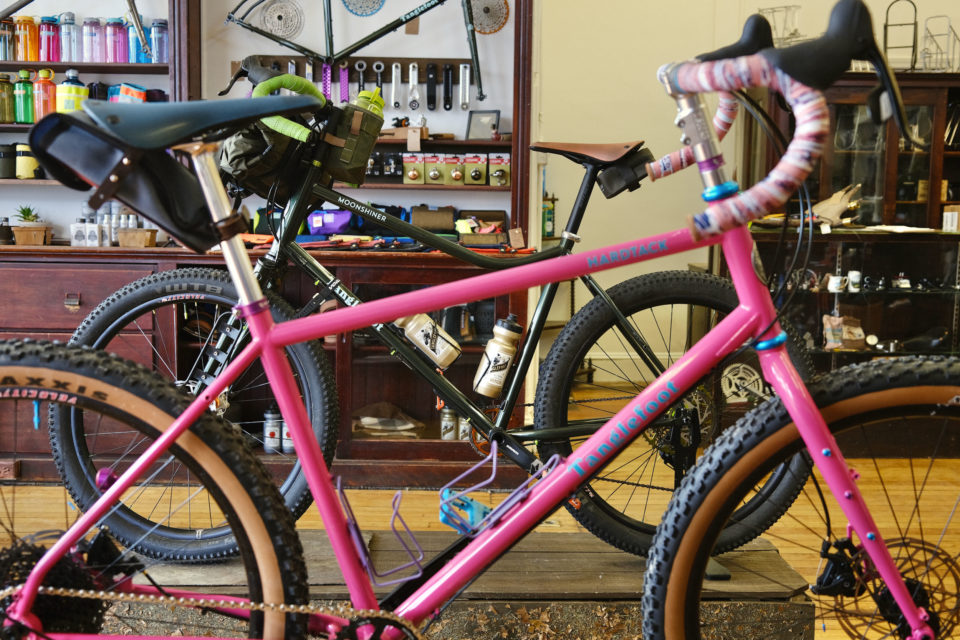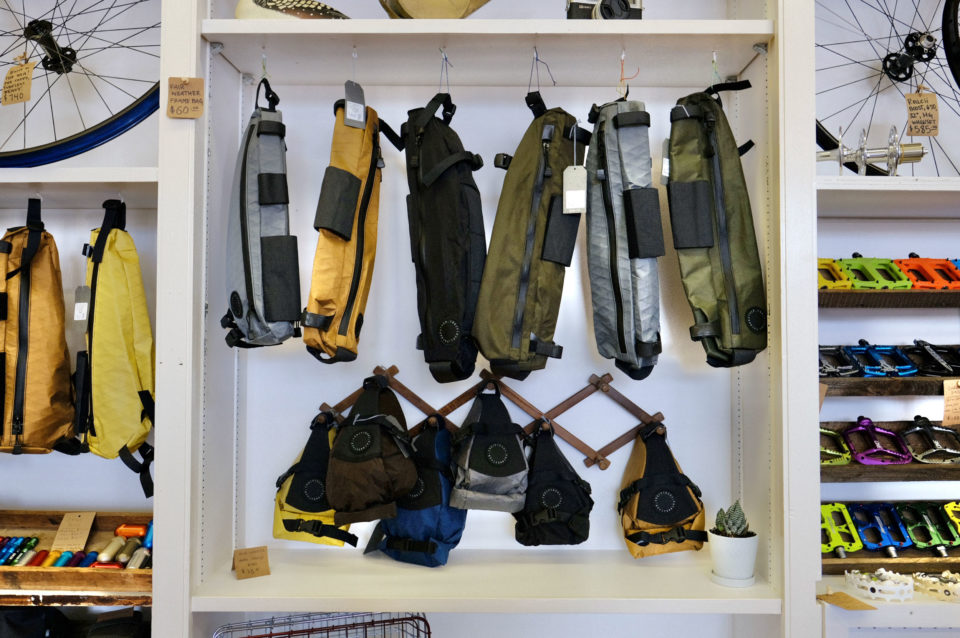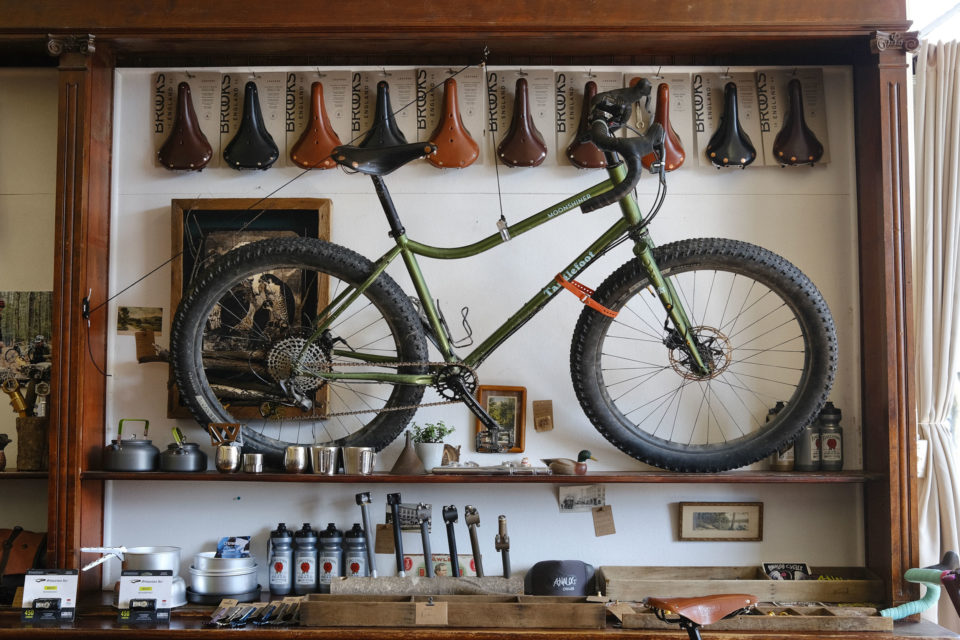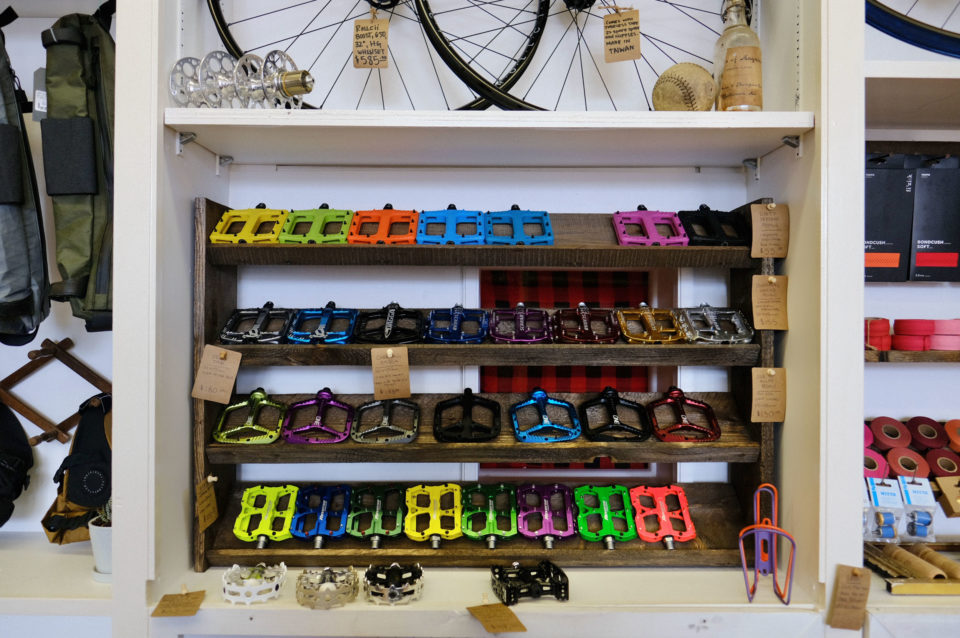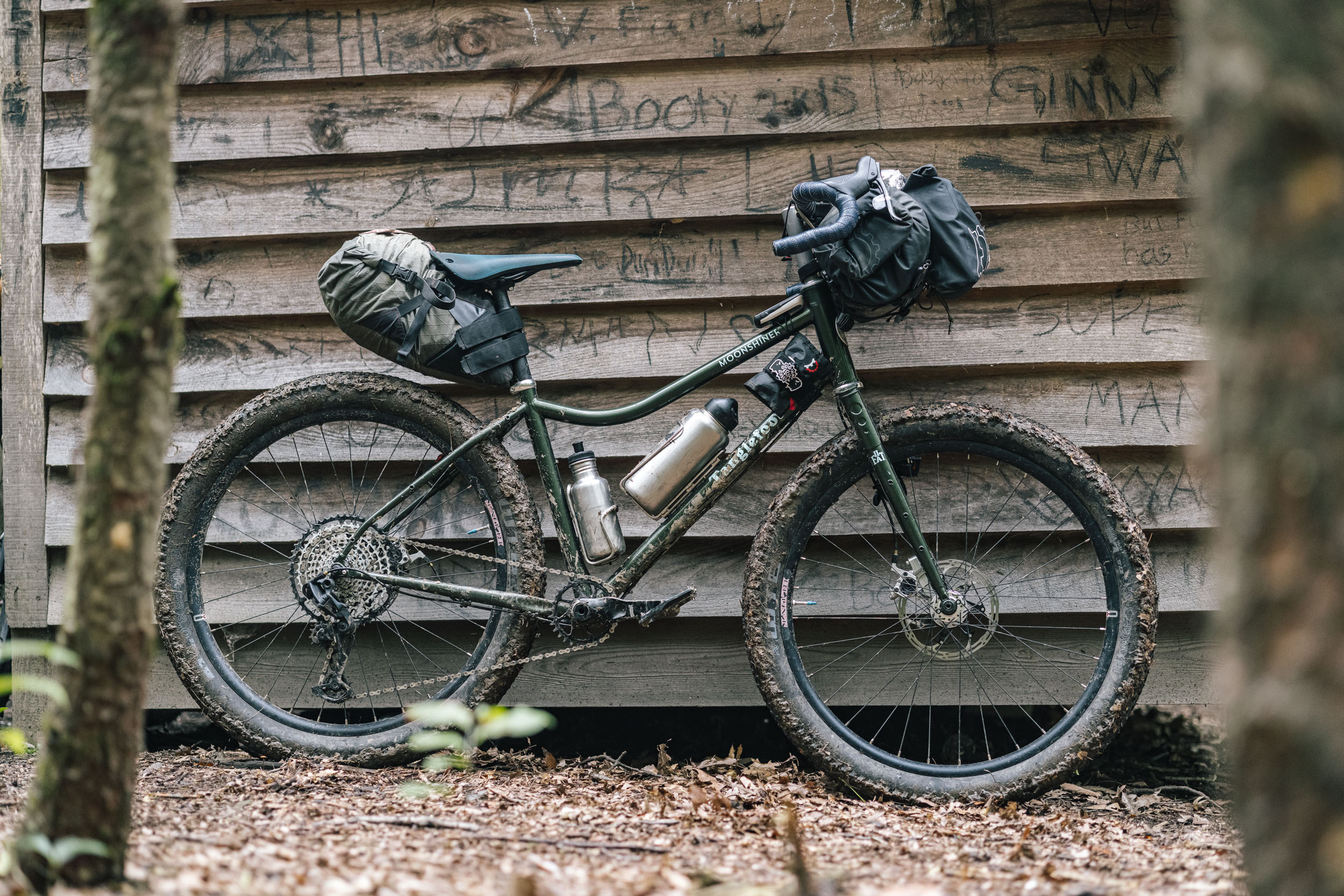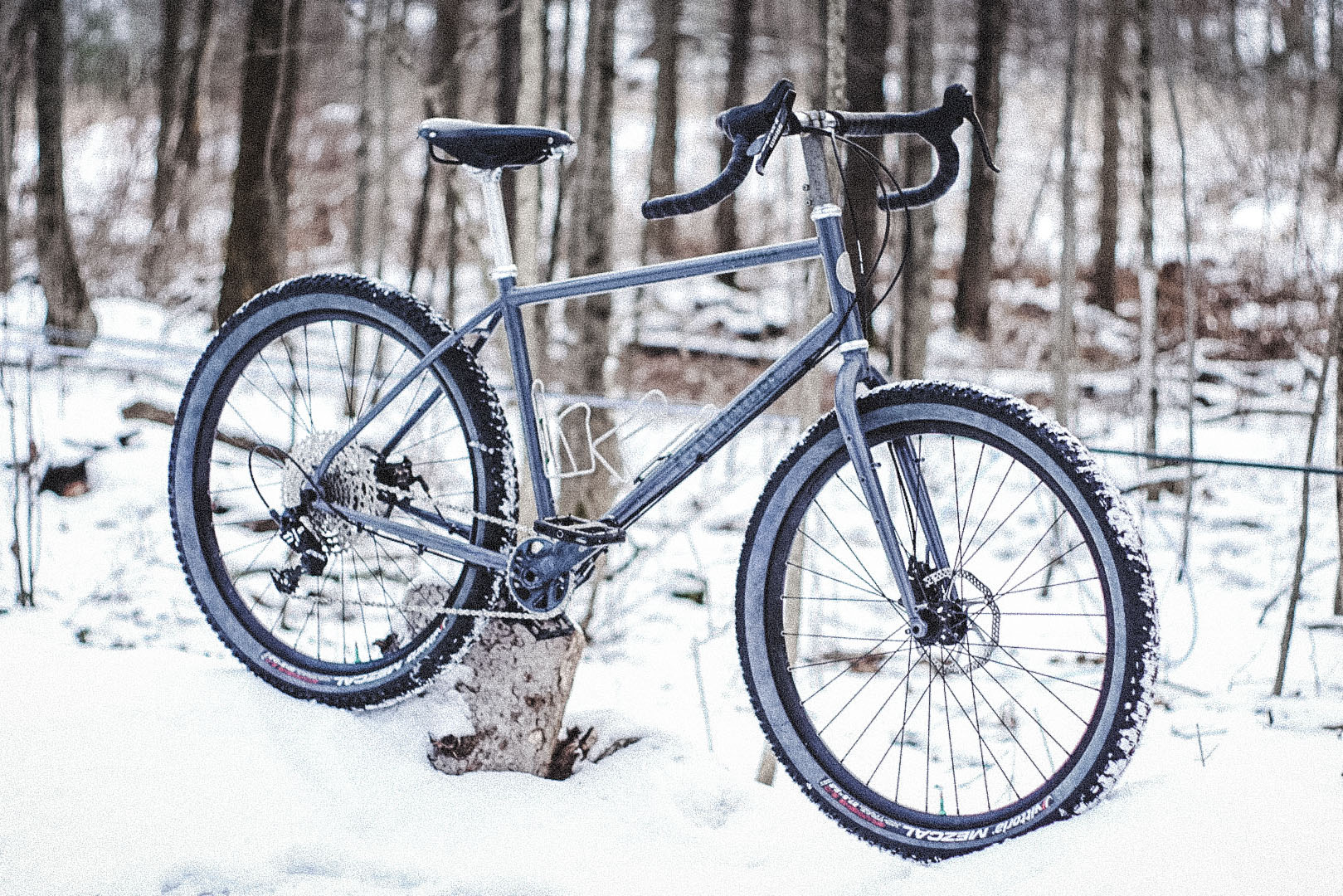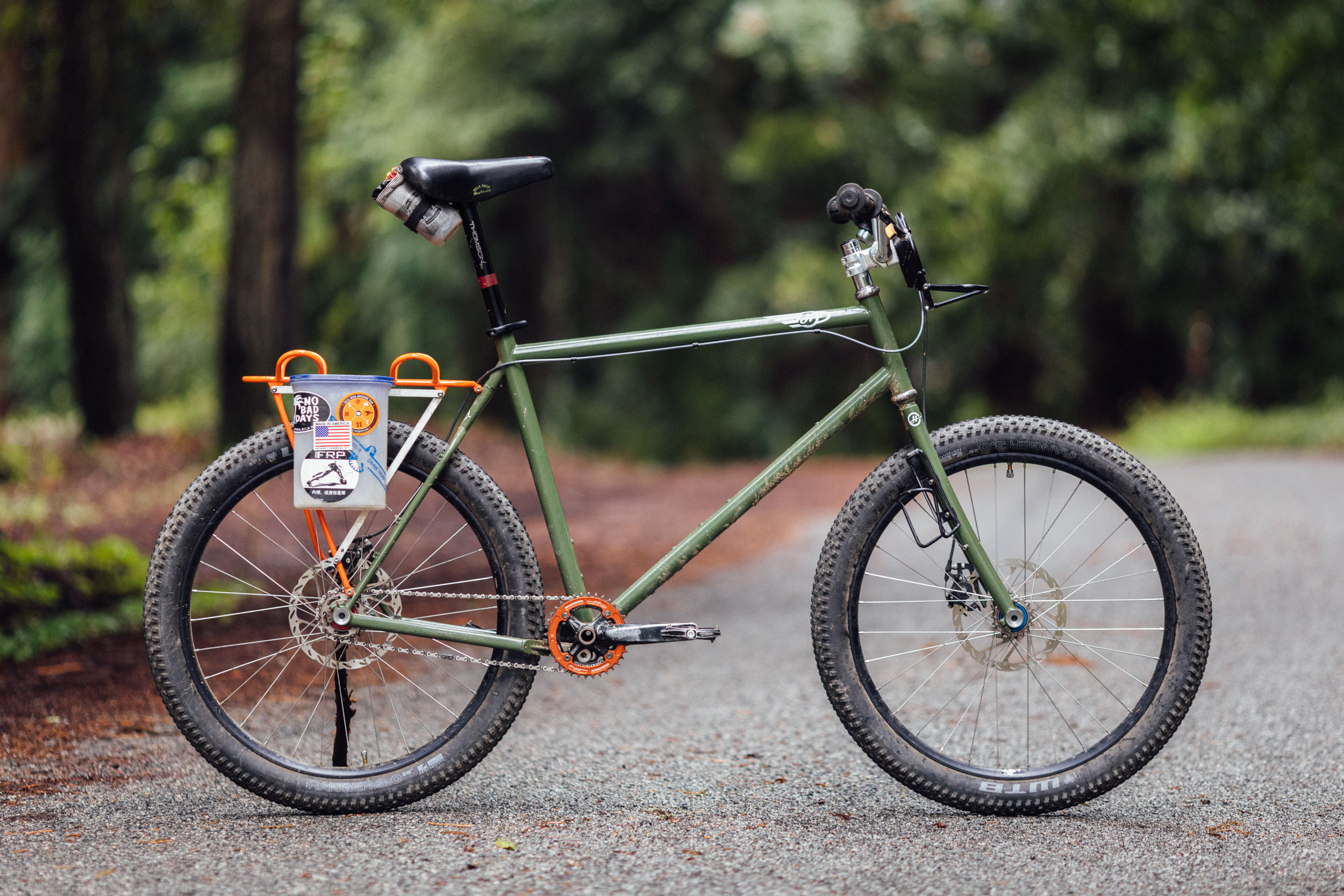A Visit to Analog Cycles: Celebrating Dirt and Woods Pedaling
Share This
Analog Cycles is a small shop in Poultney, Vermont, specializing in a thoughtful, intentional approach to all-terrain adventure riding. In a short time, it has become fiercely beloved to many customers in the northeast of the USA. We visited Analog at their just-opened new location, and we think their reputation is rightfully earned. Find photos and our interview with co-owners James Johnson and Candice Passehl here…
With additional photos by Michael Zhao (@mhzhao)
Readers might be familiar with Analog Cycles from our short introduction in 2021 and our review of the incredible Tanglefoot Moonshiner. For the past two and a half years, Analog had a notable address in an off-the-grid sugaring house plus a rented workshop garage from the Eagle Tavern. Those spots very much expressed Analog’s philosophy, but it was time to move to a roomier and more flexible locale. The new space is not far from the original and is right downtown in a historic building that has variously been a printing shop and a pharmacy.
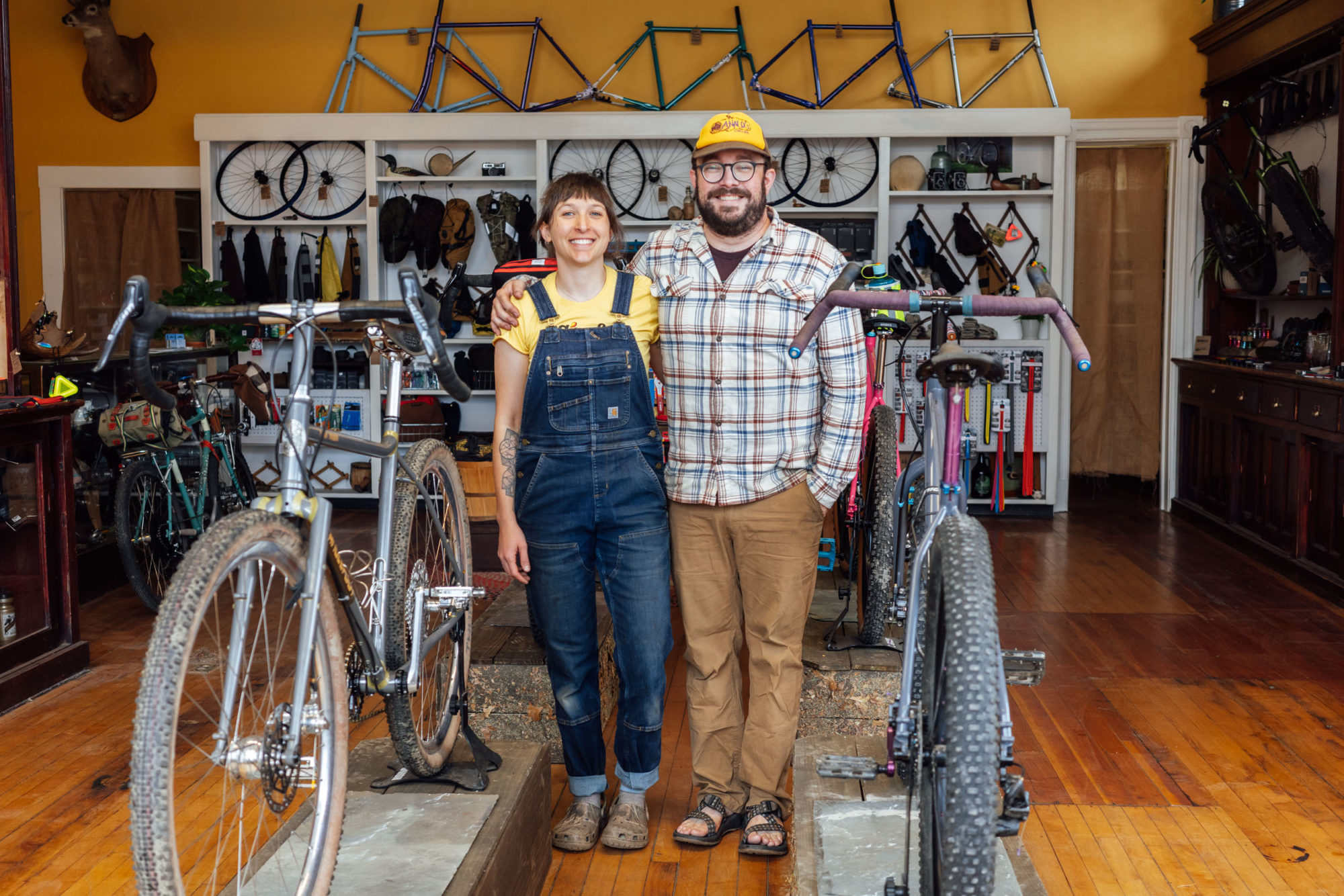
Analog brims with purpose and feel. The bicycles are shown dressed in adventure livery, the parts sections hum with a range of colors and possibilities, and each station exhibits the care owners Candice and James put into sharing a love of ATBs. There are images from the history of cycling and motifs invoking past uses of the premises and the history of Vermont. Vanishingly few shops that I’ve been to—perhaps a couple in Japan come to mind—have an aesthetic focus and mission as clear as Analog’s, not to mention that the presentation is tastefully lovely.
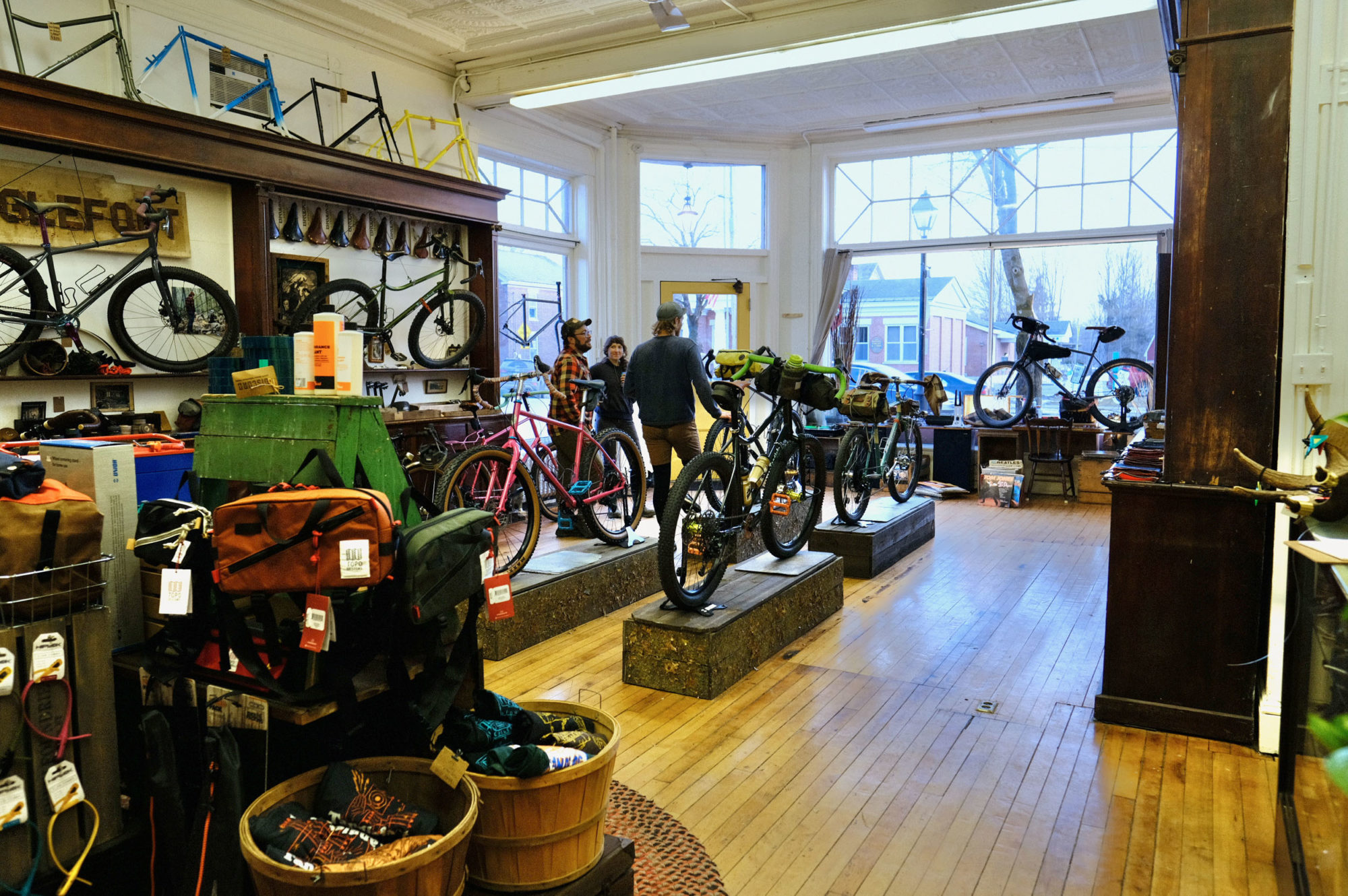
Practically, Analog is about function, comfort through fit, and sustainable design. Beyond that, I felt the imaginative fun, romance, and escape of the best kind of rides, including bikepacking.
One of the contrasts between analog and digital systems is a metaphor about what is important. Analog things—a watch with hands, a vinyl record, a film camera—are old-fashioned and maybe slower but are embedded in the world in an organic way. “Digital” connotes our contemporary technological, information-driven age but can imply a loss of texture and a disenchantment. Analog Cycles celebrates the bicycle as a retro and positive tool for getting out on dirt roads or into the woods against the backdrop and geographic context of New England. To me, Analog is an evocation of a style of cycling that emphasizes riding for joy.
If you’re in visiting distance, be sure to put Analog on your list (check their website for hours, and don’t hesitate to let them know you’re coming so they can check stock or prep demo bikes). The riding in the area is tremendous, and the Analog crew are a wealth of advice on local trails and killer Class IV roads, so you can easily make a day or overnighter of it.
Here are James’s and Candice’s words about what they’re after:
Could you give us a refresher on who you two are and your background in the cycling industry?
Candice: I was born ‘n’ raised in Colorado. While pursuing a degree in geology, I ended up falling in love with bikes. Riding to school and work was rewarding: the reduced carbon footprint felt right and it was challenging and empowering to be my own transportation. After college, I moved to Frederick, Maryland. Frederick has a bunch of rocky, old-school singletrack, and I found myself diving into more mountain biking.
A typical day would be to ride into work at Gravel & Grind, where I apprenticed as a mechanic. After work, I’d ride up into the Frederick Watershed and hit the rocky ridge trails as part of my commute back home. I built my first drop-bar mountain bike and started to do bikepacking trips, learning how to pare down gear and optimize loading my bike as I went along. James created a super intensive bike knowledge curriculum for me, and I worked my way through that as a way to quickly learn important mechanical, historical, and metallurgical facts. There were tests and papers and all of that! Now I’m the head mechanic at Analog and run daily operations.
James: I’m a bike industry lifer, thrown into a bike shop at age 15, never more than a year outside of the industry. I had a brief stint in art school and as a commercial artist, but the gravity of the bike shop is strong and always pulled me back in. I’ve worked at big shops and tiny basement shops and eventually became a bike fitter and store manager at a large normal bike shop in Frederick.
I did hundreds of fits using the old Fit Kit method and then several hundred more using F.I.S.T. (Fit Institute Slow Twitch) methodology combined with the Guru fit machine. For those who don’t know, the Guru fit machine changes a rider’s fit in real-time on a robotic fitting machine. You use the same methodology that an eye doctor uses: What’s better, position A or B? That’s combined with power meter info and visual fit confirmation, such as making sure a rider has relaxed shoulders, no hip rock, etc. I employ everything I learned about fitting whenever I help get someone on a new bike, and fit is the core of every build Analog does.
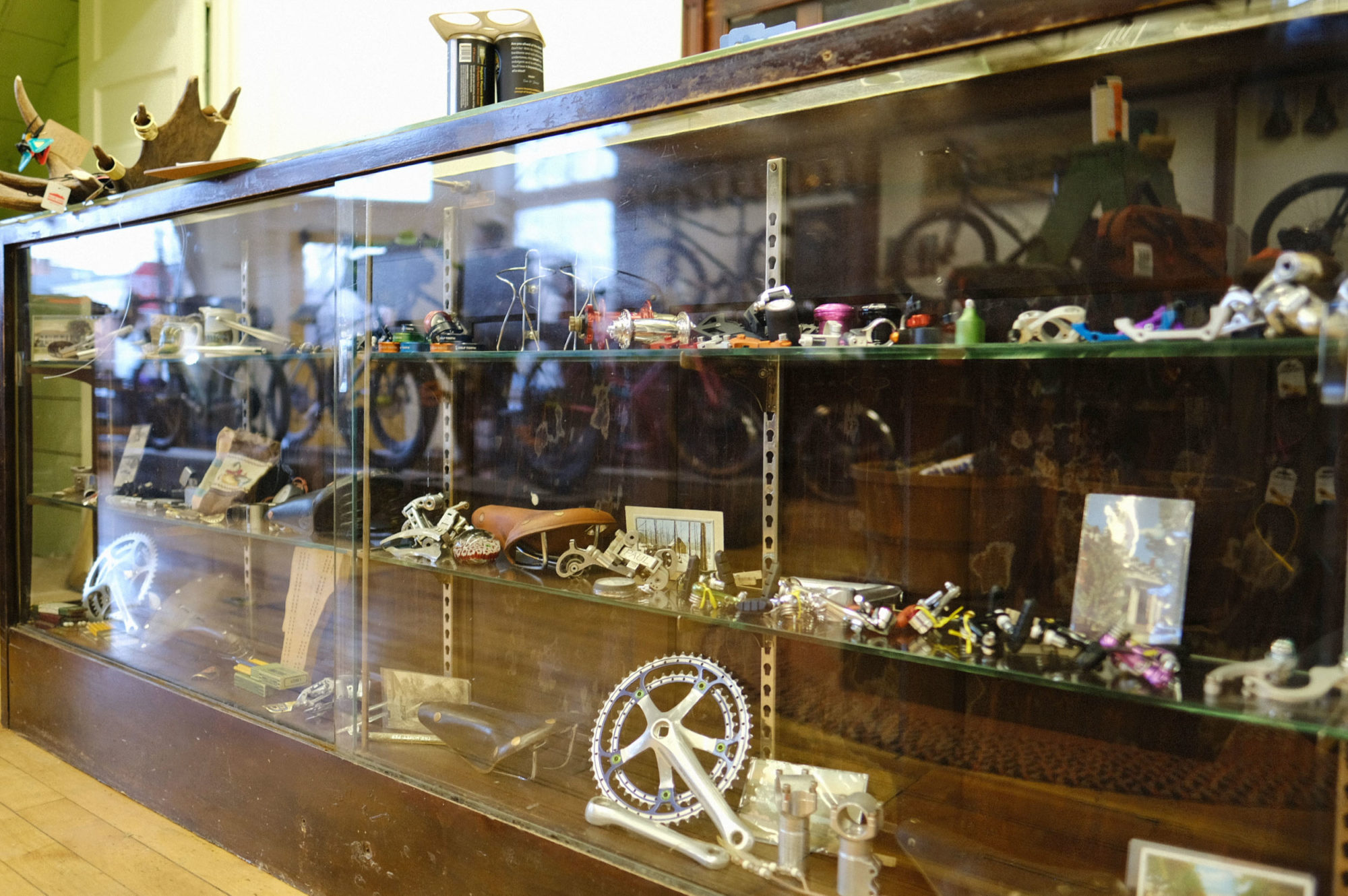
Before moving to Vermont, Analog Cycles had an iteration in Maryland, right? What motivated the move to the Green Mountain State?
James: Candice and I left a shop I had co-founded called Gravel & Grind and started Analog in our apartment and my parents’ basement four and a half years ago. We knew enough folks in the industry that setting up wasn’t hard, and I had some inventory and tools on hand from my last shop. We knew right from the get-go that we wanted to move to Vermont, and as soon as our apartment lease was up, we moved north.
For the first few months, we lived in a two-person backpacking tent while we transformed a 320-square-foot off-grid sugar house that I had inherited from my Grandmother into a functional retail space. Toward the end of mud season, we cleared a bit of land and built a yurt with the help of a dozen or so friends. To this day, we have no running water, sporadic electricity, and only use wood for heating. The idea behind the shop and our move was to live more simply, make easy to use, functional, fun bikes, and see where the new location led us. There was no grand plan. Just a feeling that it would work out. Most of our friends and family thought we were out of our minds. Poultney is a small town, and the sugar house is in an even smaller village outside of Poultney with 364 residents. My mom and Grandmother are both from Poultney, and my Grandfather used to be the guidance counselor at Poultney High.
The sugaring house—with a wood stove and a generator when electricity was needed—was a cool spot. I’m psyched, though, about the new downtown storefront in Poultney. Tell us about it.
Analog landed in a building called the Journal Press. It used to house a large printing press, a two-lane bowling alley, an indoor mini-golf course made entirely of asbestos, and a pharmacy. We’re in the old pharmacy, which operated for about 100 years. A lot of the old fixtures are still in place, big scrolled wood shelves, maple flooring, the tin ceiling. We dragged the old retail counter out of the basement using a truck winch and reinstated it. Analog probably could have continued to exist in the sugar house, but Tanglefoot, our bike brand, needed way more space. Wheels and frames take up lots of room! Analog’s workshop is in the basement of the Journal Press building, along with all of the Tanglefoot storage.
As people can see from my remarks in the introduction, I’m an enthusiastic admirer of what you’ve achieved at Analog. What’s your philosophical vision for the shop?
In a nutshell, we want to make bikes fun. To me, that means they’re comfortable and can be ridden in a variety of conditions by people of every skill level. Bikes should be pleasurable to work on but never need much work. That plays well with our other goals, among them: to make bikes that last 25 years or more and fit the riding you do now but also be adaptable to future uses. Our materials focus on durability and a responsible end-of-life cycle.
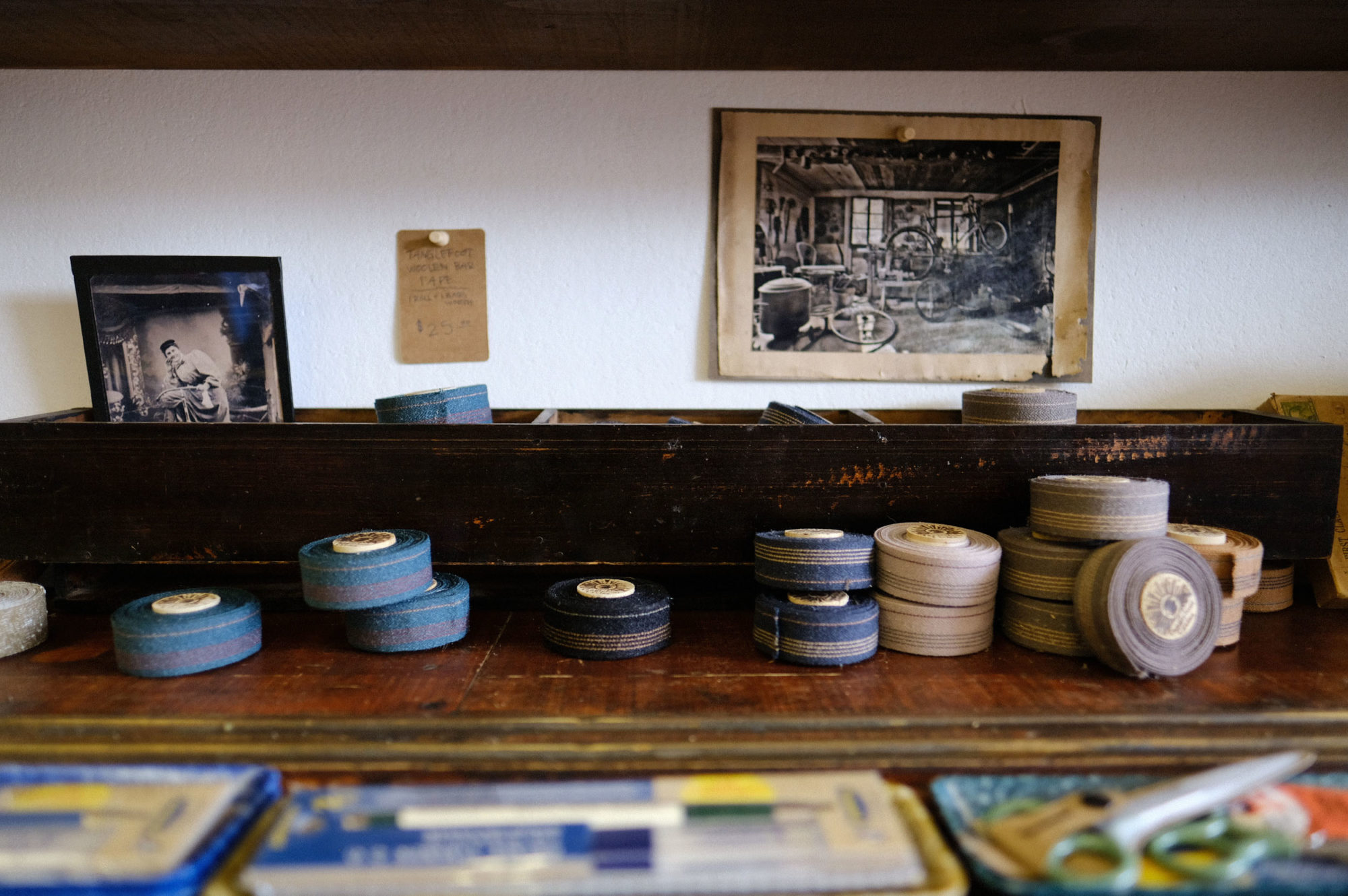
Steel frames, when they’re played out, can be recycled or just left to rust away back into their base elements. It’s the only metal that can be dented and retain metallurgical integrity. It’s also easier to repair than any other metal. Candice says that Analog is tethered to Tanglefoot, and the embodiment of our philosophy is best shown in the bikes and products we make. Bridgestone and Rivendell have been a big influence on our worldview, along with looking at old bike catalogs and going to the Copake Auction to see bike tech from a century ago in person.
You organize fun-sounding bike events for the community. Wanna share some of those?
I grew up racing a rigid single speed in 24-hour mountain bike events. The emphasis (for me!) was always on community and fun, not on the race itself. The only reason I ever placed was because we were one of only three rigid single speed teams at the race! I wanted to make Analog’s events in the same vein. They might be hard, or nuts, like a 24-hour race, but ultimately they’re about having fun and hanging with like-minded folks.
We have four events a year, but the two that are probably the weirdest are the Gorey Hollows and the Fifth Season Ride + Race. The Gorey Hollows is designed to be the hardest sub-100-mile ATB race out there. Think 80ish miles and 14,000+ feet of climbing. The ride goes over washed-out roads that have been captured by streams, singletrack, snowmobile and ATV trails, and normal dirt roads. There are river crossings, loose and long hike-a-bikes, and untracked courses through the woods. Most riders DNF.
Last year, we forgot to put a time limit in, and a rider rolled in 17+ hours after starting. The winner gets an apple pie and donuts, plus dubious bragging rights. There’s a mellow ride that goes along with it and a medium-length ride that’s hard enough to garner its share of DNFs, even though it’s only 40ish miles. When folks get back from the rides, they cheer racers on at the finish around a big bonfire.
The Fifth Season Ride and Race is based around Poultney’s Maplefest, a yearly celebration of maple syrup. All of the local sugar shacks are open, so we ride or race around, eat fried dough with syrup on top, do maple syrup shots, and generally indulge too much in sugar. Afterward, folks hang around and camp if they want. This past year, we went to a hunting camp and ate pancakes and drank Buck Boui, which is a highly regional drink made of cheap scotch, anise, and low-grade maple syrup.
When I was there, you were spinning Sabbath and Melvins. What else is on the shop vinyl playlist?
Oh, all the good stuff. I’m a huge Melvins fan, but right next to a copy of Gluey Porch Treatments, you’ll find Bach, Miles Davis, Charles Mingus, Cat Power, Fugazi, Unwound… I’m all over the place. My requirement is that music shouldn’t be boring, and it shouldn’t be background noise. We have a strict “no autotune” policy as well.
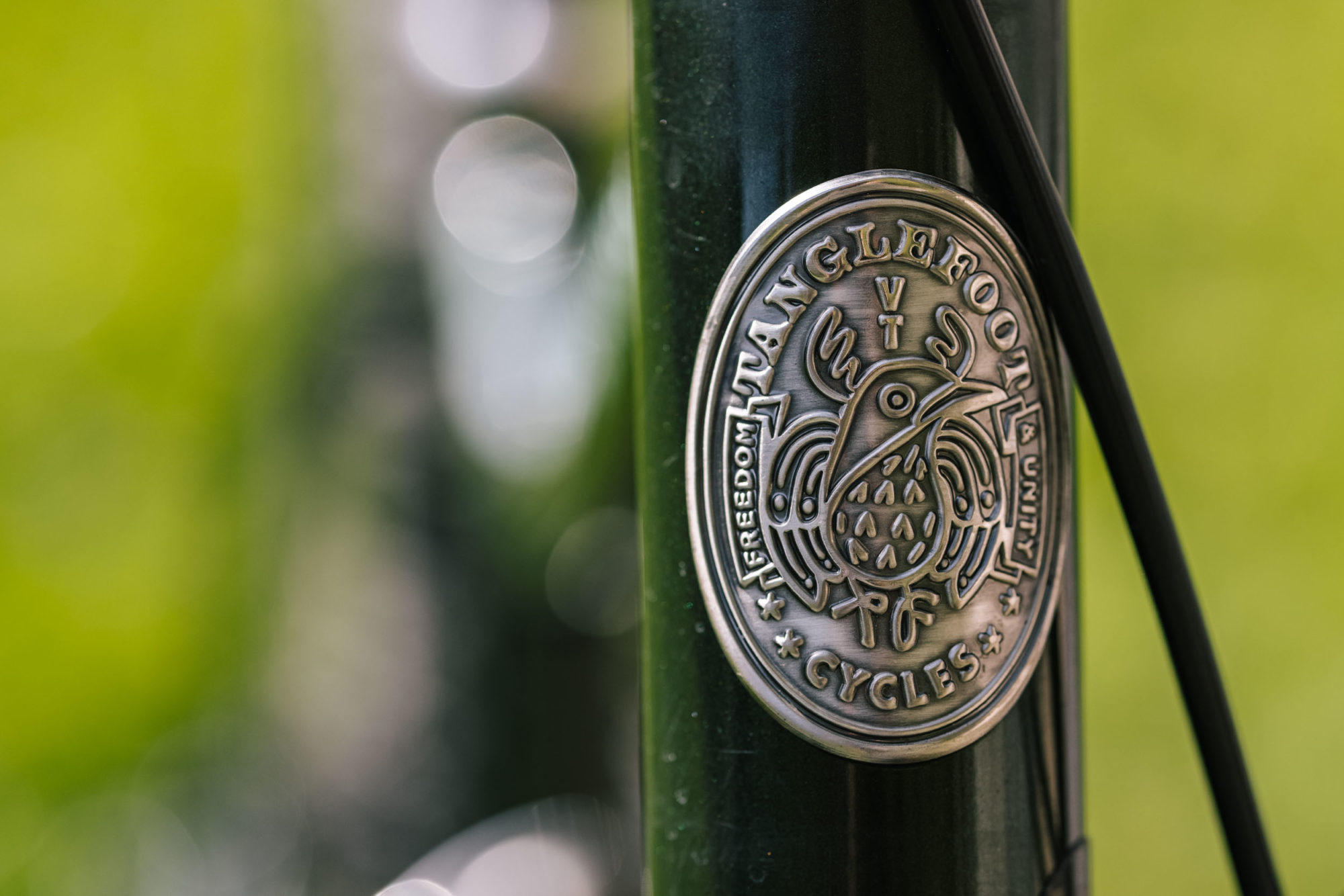
You two have a distinctive point of view about cycling: everything from fit, to function, to aesthetics, to consulting with customers. Not that it’s going to be easy to distill in a short space, but can you introduce us to that point of view?
James: When I was growing up, I rode mountain bikes with whatever bargain bin ano bits I could find. My bike looked like a clown barfed on it. To me, it was unique, mine, not some bike out of a catalog specced by someone I’d never meet. I wanted to bring the same uniqueness to our builds. Candice really helped me out there. I was pretty stuck on the Rivendell “it has to be silver” tip for a long time, and she convinced me that bikes that are fun to ride can be fun to look at and build too.
When we work with customers, we start with a fitting and build worksheet that goes into all sorts of things, from personal measurements to visual inspirations. From there, we give the customer a spreadsheet that they can mess with. They can customize everything from the derailleur pulleys to the cable end crimps to the color of the sparkles Candice puts in the shellac for the bar tape. It’s far beyond what most folks even think is possible in regards to customization, and there’s a sense of wonder and excitement for the customers as a result.
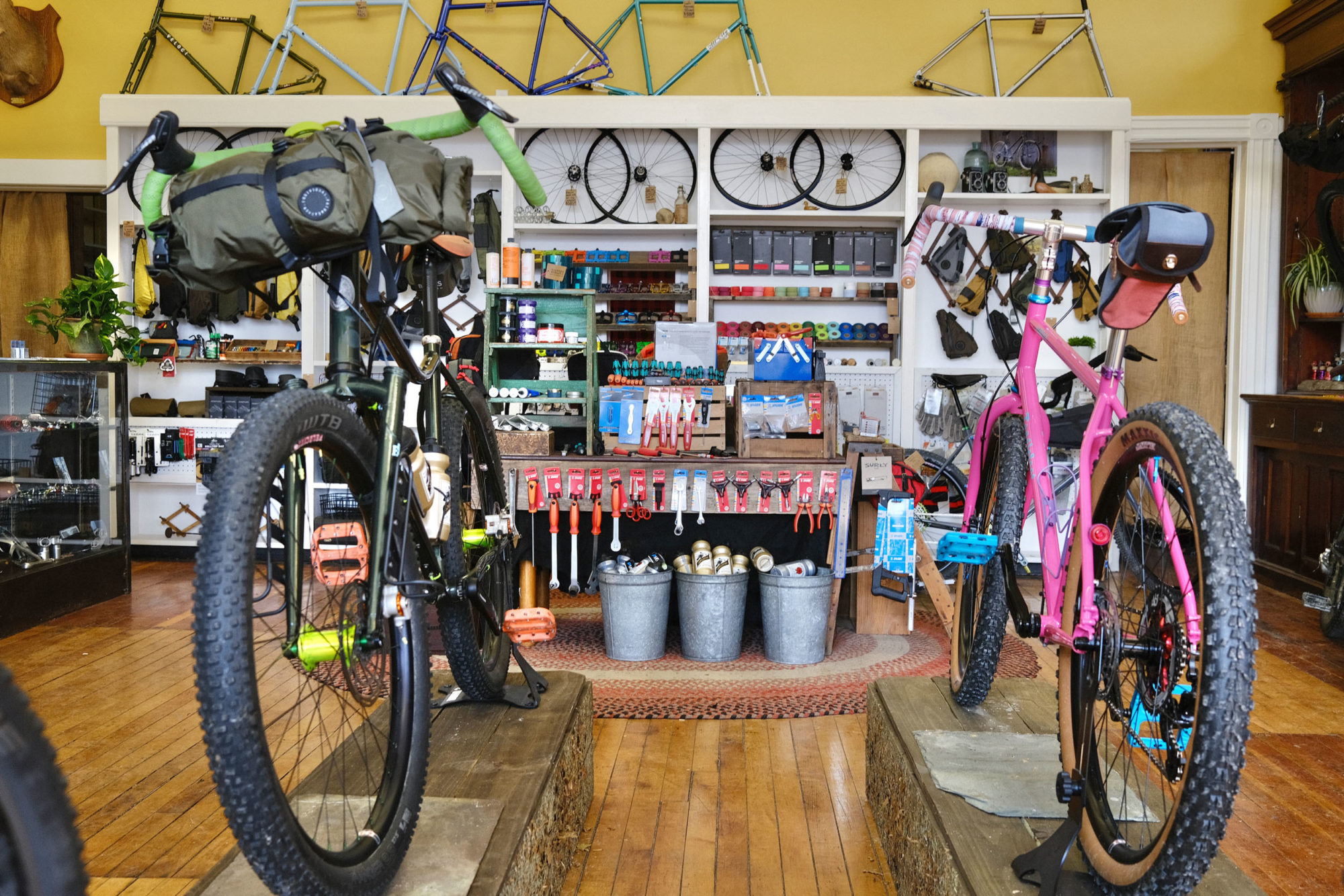
Who are your customers?
Analog is lucky to have a wide range of customers. The day I’m writing this, we had a 5th grader getting a custom Tanglefoot Hardtack, a 76-year-old getting into gravel riding, and a guy who had us reimagine vintage Japanese road bikes with vibrant anodized parts from Paul and White Industries. Our ideal customer is someone who is either new to riding or who has been riding but thinks they could be more comfortable, have more fun, or want to personalize their bike in a way that is outside the norm. If someone leaves the shop smiling, we’re doing our job.
Tanglefoot is your bike brand, and so far, we’ve seen the Moonshiner and the very recently released Hardtack. What informs your bike design—what’s the broad mandate, so to speak? Are there more models coming?
Our motto at Tanglefoot is the Future Depends on the Past. In a nutshell, Tanglefoot is about reaching into the near and distant past to solve today’s problems. We look at many bikes from 1900 to 1915 that were ridden on bad roads like Candice and I like to ride now.
We have a gravel bike with clearance for 2.4” tires in prototype right now. It’s called the Sour Mash, and looks a bit more classic than the current offerings. It’ll come in a five-size range, filet brazed, off-road tested and rated. Best guestimate on timing is two years out.
The Bull Thistle is another bike that’s currently available, but it takes about a year to get, mainly because the painter is so backed up. It’s a US-made fat bike with 4” tires, lugs, and a quill stem. It’s a perfect mud season bike and is probably the only fat bike out there that intentionally channels vintage touring bikes. The Bull Thistle is made on a custom basis by Alex Meade in Massachusetts.
Favorite Vermont beers these days?
Dang, there are so many. Our buddy Tim is a homebrewer, though, CLASS 4, and I can ride my bike to his place. We love to hang out around the fire with him and try to dissect flavors. He just made a beer for our Fifth Season ride that’s an excellent pale ale.

What are bicycles for?
I think bicycles are where imagination meets reality. They’re excellent tools for exploration in all senses of the word: what can you do without a car, where can you go that you can’t go with anything else, what can your body do, what can the bicycle do on certain terrain. If you imagine it, you can probably do it on a bike.
Lastly, is there anything else you want readers to know about Analog Cycles?
We love to have riders camp at the old shop property. We have about 15 rustic campsites, and we’re right off a dirt road that leads to 70+ miles of gravel and class 4 stuff. It’s a five-minute pedal from the camp zone to 40 miles of singletrack. A good place to come for a long weekend and ride. Just shoot us an email before you come so we know who’s in the driveway!
Related Content
Make sure to dig into these related articles for more info...
Please keep the conversation civil, constructive, and inclusive, or your comment will be removed.






